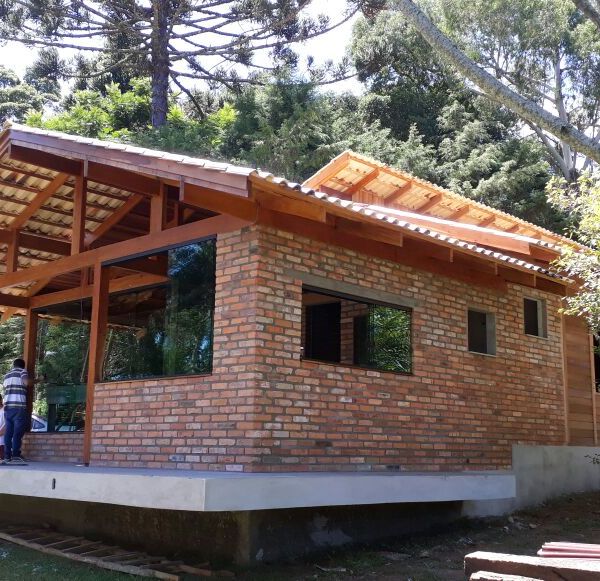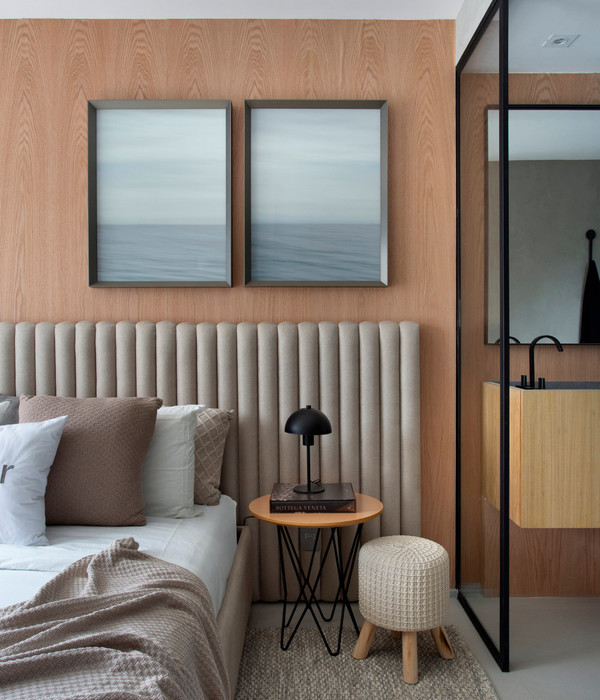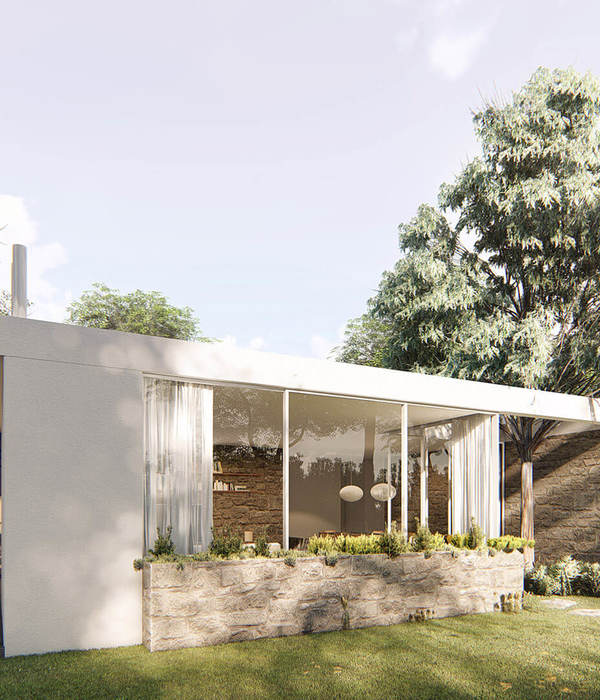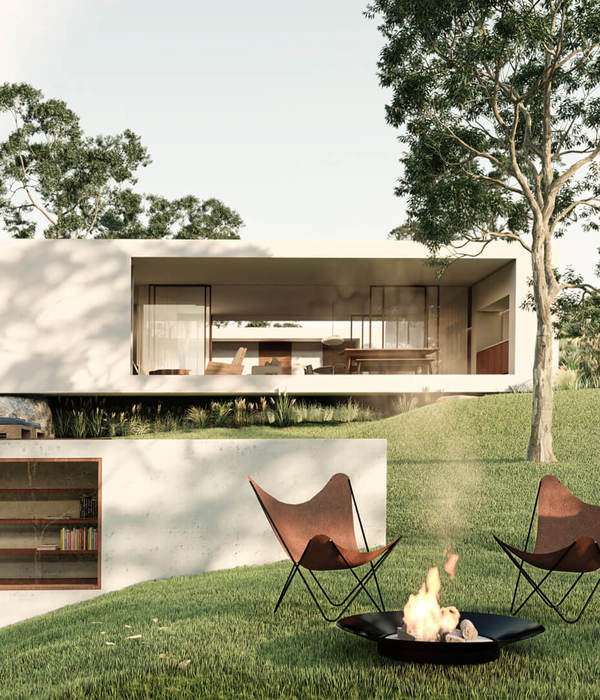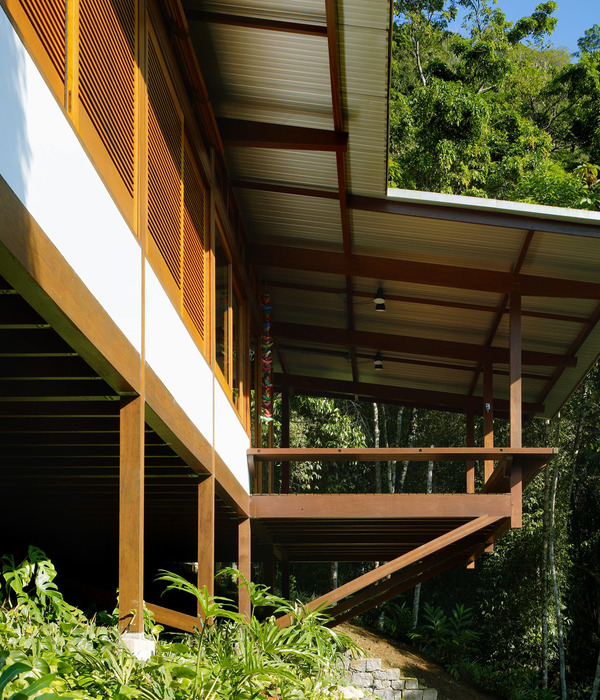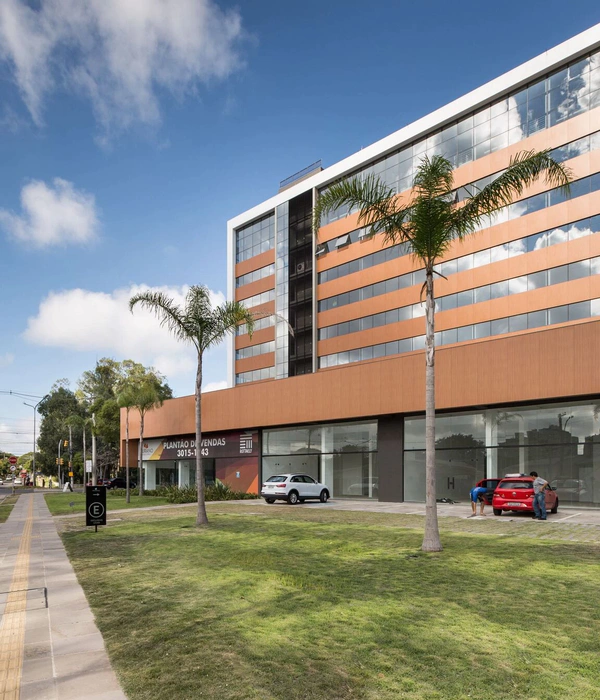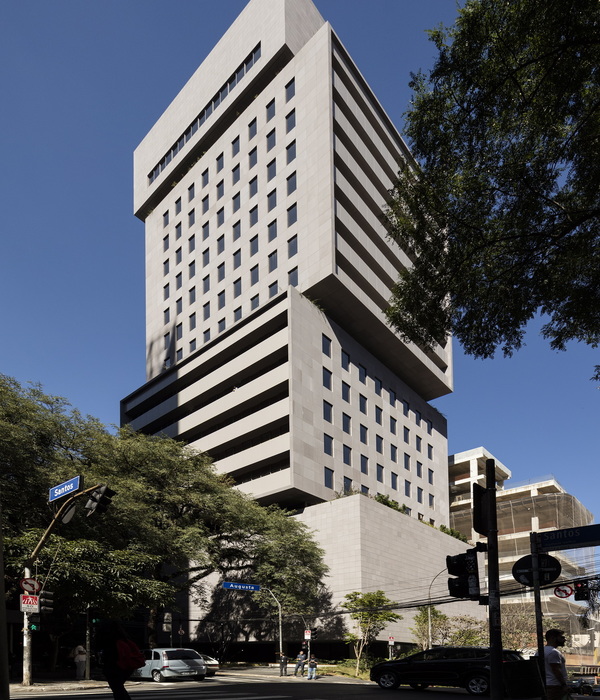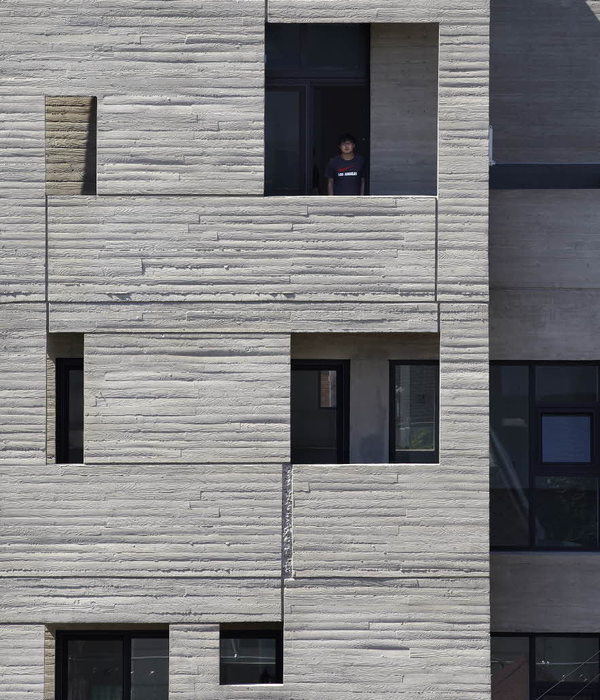- 项目名称:汨罗“端午人家”乡村安置聚落
- 项目类型:乡村回迁安置房
- 设计方:造作建筑工作室(方案)
- 项目地址:湖南省汨罗市
- 建筑面积:46700㎡(一期)
- 建筑方案设计:造作建筑工作室
- 主创建筑师:沈悦,戴文竹
- 建筑施工图设计:中瀚设计集团有限公司
- 业主单位:汨罗文旅集团
- 施工单位:中国核工业二四建设有限公司
- 摄影:赵奕龙
这是一个乡村回迁安置房工程,涉及当地6个村,近400户农村家庭的拆迁与安置。
This project serves as a community for relocated suburban residents, which includes 400 households from six nearby villages.
▼鸟瞰:聚落的黏连状态,Aerial view: the cohesive state of the settlement.
continuous state of the village
▼鸟瞰:整体聚落,Overall view of the village
▼鸟瞰:临水区域,Aerial view: waterfront area
▼水边:隔岸观村,View to the village from across the river
项目于2021年完成第一期建设,随着村民陆续迁入,并在自家开出了超市、餐馆、各类店铺等五花八门的微型乡村商业,这里已经初步形成了社区氛围。
Phase 1 of the project was completed in 2021, as villagers moved in and a variety of small businesses started to bloom, the sense of community has formed spontaneously.
▼鸟瞰:已有烟火气的聚落, The village already has a living atmosphere
▼民居:村民入住后的街区氛围,The inhabited village
▼居民形成的归属感,A sense of belonging formed by residents
▼建筑形成远近层次,Theorderly arranged houses
共同生活的今昔
Live Under the Roof: Then and Now
汨罗当地的大部分村落现状可以用八个字形容:小簇散落,清冷无序。坡地林间的几栋房子组成微型聚落,布局松散,建筑也充满了低质量的拼凑感。
我们尊重这种强调隐私与独立的乡村个体生活,但也想在新的聚落中尝试重塑有规模、有社交互动的群体生活模式,让乡村的烟火气得以回归。
The layout of most local villages is spread out and spotty, which lacks coherence and interaction between neighborhoods.
While we intend to keep the necessary separation to respect residents’ privacy, we also try to emulate modes of social life via placemaking, to revive the ever-dwindling sense of community in the modern era.
▼民居:院落及人行区域,Courtyard and p
edestrian area
▼大屋:屋顶的连接,The connected roofs
▼水边:广场与广场舞时间,Villagers on the waterfront plaza
,Paths between houses
槽口檐廊,Thegable porch
之所以是“重塑”,因为这种生活模式在湘北地区早已形成。它实现于一种已被业界前辈定义过的建筑类型:湘北大屋。
Our mission to emulate such social interaction stems from the study of a historic type of architecture – “Northern Hunan Big House”, which promotes such lifestyle.
▼大屋原型调研:岳阳张谷英村鸟瞰,Research on the prototype ofNorthern Hunan Big Houses
湘北大屋的重构
To Emulate an Old Lifestyle
这原本是一种家族式建筑群,建筑之间有明显的轴线关系,在每条轴线上通过天井的串联,形成“丰”字形空间递进。但无论建筑群如何扩张,屋顶始终紧密连成一片。因此整个大屋呈现“下分上合,多进多排”的特点。
As a community for large families, a clear organizational logic is created by using a hierarchy of axes and courtyards. The roofs are always interconnected to provide protection and shade.
▼大屋拆解过程
,Disassembly Process
通过 “轴线——图底——分户——去礼制——归类”的分层解读,我们从“大屋”中拆解出6种建筑单体基本类型,再通过变形、筛选、组合,将其拼合成不同规模的大屋聚落,每一组大屋外围包裹机动车道,内部形成宅间人行小径。
We tried to decompose such organization with a linear process: understanding the axes – studying the figure-ground – separating the households – un-ritualizing, and finally, sorting. As a result, six basic components are identified to form a variety of combinations that enable motorized traffic at the perimeter while keeping the courtyards at their cores.
▼类型演化,Typology evolution
▼建筑类型一,Typology 1
▼建筑类型二,Typology 2
屋顶连接的意图
The Inter-connected
大屋的“下分”,解决了不同家庭的独立居住需求。而“上合”才是探讨群体生活的一种方式。因此我们以“屋顶有连接的可能性”为依据,对所有类型进行重新编辑排布。
As the houses are separated to respect residents’ privacy needs, the inter-connectivity of roofs serves as an important factor in our design philosophy, as it defines the locals’ unique lifestyle over the course of the history.
▼大屋面概念手稿,Sketch
▼湘北大屋爆炸图,Axon exploded
▼民居:典型立面,The typical facade
▼鸟瞰:大屋屋顶,Roofscape
▼大屋:随地形起伏的院落,Thecourtyard that undulates with the terrain
▼屋檐下的宅间对话,The dialogue between houses
▼下分上合的大屋组团,Thegroup of large houses
▼由屋顶连接围合成的开放式院落,Open courtyard enclosed by connected roofs
▼鸟瞰-屋顶局部,Rooftop view
▼鸟瞰:大屋屋顶俯视,Aerial view
然后运用钢木结构的屋顶衍生段,在尽量不遮挡阳光的情况下,于宅间营造并突出这种连接。最终我们获得一种可拆可合的全新建筑组团,通过共享屋檐,试图从物理层面拉进邻里关系,再产生化学反应,形成社区氛围。
We use steel and wood to recreate and emphasize such structures, in the hope of encouraging interactions between neighbors.
▼水边:屋顶连接产生的檐下空间,Grey spaces created by connected roofs
▼檐下空间形成标志性场所,The eaves form an iconic place
▼临水大屋,View from the water front
▼临水界面,
Interface
▼鸟瞰:大屋屋顶,Aerial view
尾声:鱼熊兼得的快乐
Epilogue: The best of both worlds
作品拍摄期间遇到一位正在和邻居火热聊天的爷爷,他对我说这个房子很好。我问哪里好。他说:“一栋栋房子都是分开的,很好!”看得出他很喜欢独立的居住方式,也很享受这种高密度群落带来的邻里氛围。
During the photo shoot we met an elderly having a great time hanging out with his neighbors. He told us that he really enjoyed living in a house that’s separated from others.
We are pleased to find the project as a successful manifestation of our philosophy — a closely-knit community that promotes social connectivity and respects personal space at the same time.
▼鸟瞰:生活区夜景,Residences by night
▼民居:聚落夜景,Village night view
▼聚落已形成生活氛围,The lit-up village
▼聚落整体平面,Master plan
▼湘北大屋渲染白模,Model
▼总平面图,Site plan
▼场地大剖面图,Site section
▼八拼一层平面图,Plan level 1 (a group of eight)
▼八拼屋顶平面图,Roof plan(a groupof eight)
▼八拼立面图一,Elevations 1
(a groupof eight)
▼八拼立面图二,Elevations 2
(a groupof eight)
▼八拼剖面图,Sections
(a groupof eight)
四拼一层平面图,Plan level 1
(a groupof four)
四拼屋顶平面图,Roof plan
(a groupof four)
▼ 四拼立面图一,Elevations 1
(a groupof four)
四拼立面图二,Elevations2
(a groupof four)
▼四拼剖面图,Sections
(a groupof four)
▼墙身大样,Wall detail
项目名称 汨罗“端午人家”乡村安置聚落
项目类型 乡村回迁安置房
设计方 造作建筑工作室(方案)中瀚设计集团有限公司(设计总承包)项目起始时间 2017年3月项目竣工时间 2021年10月(一期)项目地址 湖南省汨罗市建筑面积 46700㎡(一期)建筑方案设计 造作建筑工作室
主创建筑师 沈悦、戴文竹
建筑方案团队 雷金剑、盛仁、熊乐霜、包莹、沈世飞、蔡贤
建筑施工图设计 中瀚设计集团有限公司
项目总工程师 任丽平
建筑施工图团队 姜伟靖(建筑)、徐杰(结构)、李小芸(给排水)、董智慧(电气)、朱旭峰(暖通)景观方案设计 造作建筑工作室
设计方项目经理 邬红杰
业主单位 汨罗文旅集团
施工单位 中国核工业二四建设有限公司
施工方现场负责人 易旭波
摄影 赵奕龙
Project name Mi Luo City“Duan Wu Community”Villager Relocating Project
Project type Rural resettlement housing
Design Team ZAOZUO ARCHITECTURE STUDIO(Programme)Zhonghan Design Group Co., Ltd(Design general contracting)Design year March.2017Completion Year October.2021 (Phase I)Project location Quzi Cultural Park, Miluo City, Hunan Province,ChinaGross Built Area 46700㎡(Phase I)Architectural scheme design ZAOZUO ARCHITECTURE STUDIO
Lead Architects Shen Yue、Dai Wenzhu
Design team members Shen Yue,Dai Wenzhu , Lei Jinjian, Sheng Ren ,Xiong Leshuang,Bao Ying,Shen Shifei,Cai Xian
Architectural construction drawing design Zhonghan Design Group Co., Ltd
Principal engineer Ren Liping
Construction drawing team members Jiang Weijing (Architecture), Xu Jie (structure),Li Xiaoyun (water supply and drainage), Dong Zhihui (Electrical), Zhu Xufeng (HVAC)Landscape ZAOZUO ARCHITECTURE STUDIO
Project manager of the designer Wu Hongjie
Clients Miluo Cultural Tourism Group
Construction unit China Nuclear Industry 24 Construction Co., Ltd
Construction site principal Yi Xubo
Photographe Zhao Yilong
{{item.text_origin}}

